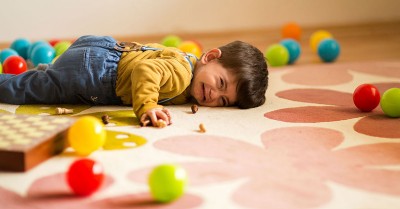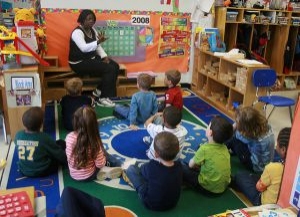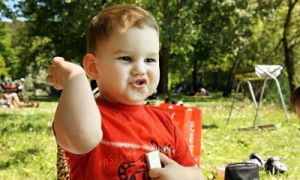Behaviour management can be challenging sometimes, with energetic toddlers and young children eager to explore their physical and social environment. The following article provides positive guidance strategies and is how Educators can implement them within the learning environment.
Get To Know Your Learners
Since prevention is better than cure, getting to know the children in your care might prepare you better to nip behavioural challenges in the bud. Set aside some time every day to talk and listen to each learner. Observe carefully to understand what interests or frustrates them and which conditions are likely to lead to confusion, annoyance and exhaustion. Eventually, you will be better able to predict and prepare for disruptive behaviours.
Set Rules And Expectations
The core of positive guidance strategies is the way rules and directions are framed; negative phrases like No Shouting are replaced with positive directions, like, Speak Softly. It is a common misconception that positive guidance completely does away with rules and uses only positive reinforcement. Instead, rules are few, clear and consistently enforced. At the same time, make sure that there are no unrealistic expectations from the learners. Activities and tasks should be age appropriate and based on the skills and abilities of the children. Unrealistic expectations set learners up for failure, the natural consequence of which is frustration and bad behaviour.
Learning Environment
The right learning environment is extremely important to facilitate positive guidance. So you might want to keep in mind the following:
- Organize the materials in such a way that they can be easily accessed by children.
- For popular toys like trucks and dolls, keep duplicates in case more than one child wants to play with them; in case duplicates are not possible, use redirection and turn-taking.
- Arrange for the classroom to be both noisy and quiet areas; a tent or bean bag with soft surfaces can function as a calm zone whenever a child needs some time out.
- A useful way to minimize classroom disruptions is to alternate high-energy and calming activities.
Positive Reinforcement
This is a fundamental principle of positive guidance which involves encouraging desirable behaviour through praise or attention. So if a child does not settle down during story reading time, avoid giving attention to their antics or tumbles; instead, praise students who focus on their story and when the child in question, does the same, offer warm praise for paying attention. This is because children increase any behaviour they get attention for.
Offer Choices
Everyone likes to have some control over their lives and children are no different. Offer children positive, age-appropriate choices and then accept their decisions. For example, if a child refuses to clean up after art time, ask them which area would they like to tidy up. Follow up with praise and guidance, if needed.
Teach Essential Life Skills
Very often negative behaviours arise not out of a desire to be disruptive but simply because the child does not know better. Plan for the daily curriculum to teach communication and interpersonal skills so that learners are able to work effectively with each other. Model problem-solving for children and practise the steps with them so that they know how to use their own resources to find solutions, instead of giving way to frustration and bad behaviour.
Further Reading
-
Descriptive Words For Children's Behaviour - As Educators, there will be many instances where you will need to write about a child's behaviour. For a behaviour management plan, assessments, half-yearly or yearly reports and more. The following lists of descriptive words and their meaning can be used to describe a child's behaviour.
-
Talking To Parents About Their Child's Behaviour Issues - It's always difficult to bring up behavioural issues with parents, it can be nerve-wracking to tell a parent that their child misbehaves but that shouldn't stop you from doing it. The following provides information for Educators on how to talk to parents about their child's behavioural issues.
-
Stages Of Behaviour - The following lists the stages and ages of behaviour and strategies to support children at each age.
-
Supporting Children With Challenging Behaviour - Challenging Behaviour is when a child does something that hurts themselves and/or other people. The following article provides information and strategies for supporting children with challenging behaviour.
Reference:
Planning for Positive Guidance: Powerful Interactions Make a Difference, NAEYC







 Working as a childcare professional can be a challenge especially when dealing with behavioural problems which may arise. The techniques we use when dealing with
Working as a childcare professional can be a challenge especially when dealing with behavioural problems which may arise. The techniques we use when dealing with There are different types of behaviour that children can display and sometimes it can be hard to manage, especially if a child is having behavioural
There are different types of behaviour that children can display and sometimes it can be hard to manage, especially if a child is having behavioural As a parent, your behavioural expectations of your child can be higher than what is actually developmentally appropriate for your child's age.
As a parent, your behavioural expectations of your child can be higher than what is actually developmentally appropriate for your child's age.
 As Educators, there will be many instances where you will need to write about a child's behaviour. For a behaviour management plan, assessments, half-yearly or
As Educators, there will be many instances where you will need to write about a child's behaviour. For a behaviour management plan, assessments, half-yearly or As Educators when communicating with Parents (through verbal or non-verbal communication), there will be times where we need to discuss issues or concerns that may
As Educators when communicating with Parents (through verbal or non-verbal communication), there will be times where we need to discuss issues or concerns that may As part of your child's development it is normal for your child to have anxiety and fears. A baby commonly shows a fearful sign to
As part of your child's development it is normal for your child to have anxiety and fears. A baby commonly shows a fearful sign to All children deal with anger on a daily basis. Thinking about it as a child, there is a lot to be angry about. Elder people
All children deal with anger on a daily basis. Thinking about it as a child, there is a lot to be angry about. Elder people It is important to understand that your child behaviour problems could not just be from attention seeking. There are many factors to take into consideration
It is important to understand that your child behaviour problems could not just be from attention seeking. There are many factors to take into consideration It's always difficult to bring up behavioural issues with parents, it can be nerve wrecking to tell a parent that their child misbehaves but that
It's always difficult to bring up behavioural issues with parents, it can be nerve wrecking to tell a parent that their child misbehaves but that Attention deficit hyperactivity disorder (ADHD) is a psychiatric disorder of the neurodevelopmental type in which there are significant problems of attention and/or hyperactivity and acting
Attention deficit hyperactivity disorder (ADHD) is a psychiatric disorder of the neurodevelopmental type in which there are significant problems of attention and/or hyperactivity and acting


